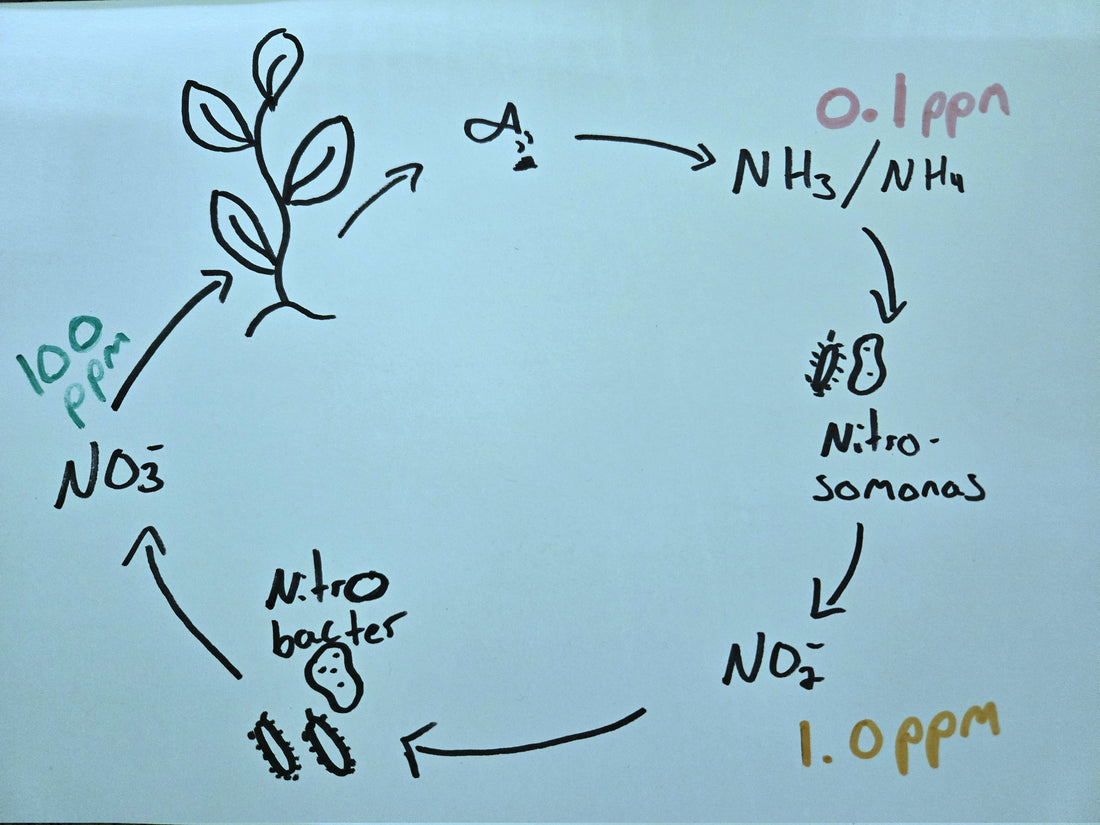
Cycling a New Tank and How Plants Can Help
Share
Introduction
Starting a new aquarium is an exciting journey, but it requires careful preparation to ensure a healthy environment for your fish. One of the most crucial steps is cycling your tank, a process that establishes beneficial bacteria to break down harmful waste products. Interestingly, plants can significantly aid in cycling your tank, making it smoother and more efficient. In this post, we'll explore the cycling process and explain how plants can help you create a thriving aquatic ecosystem.
What is Tank Cycling?
Tank cycling, also known as the nitrogen cycle, is the process of establishing a colony of beneficial bacteria in your aquarium. These bacteria convert harmful ammonia, produced by fish waste and decaying organic matter, into nitrites and then into less harmful nitrates. Here’s a simplified breakdown of the nitrogen cycle:
- Ammonia Production: Fish waste, uneaten food, and plant debris break down into ammonia (NH3/NH4), which is toxic to fish at levels as low as 0.1ppm.
- Nitrite Formation: Beneficial bacteria called Nitrosomonas convert ammonia into nitrites (NO2-), which are still harmful to fish at levels above 1.0ppm
- Nitrate Formation: Another group of bacteria, Nitrobacter, convert nitrites into nitrates (NO3-), which are much less harmful and can be utilized by plants as a nutrient. Most fish can tolerate up to 100ppm of Nitrate.
How Plants Help with Cycling
Plants play a vital role in the cycling process and offer several benefits:
Absorbing Ammonia and Nitrates:
Live plants can absorb ammonia directly from the water, reducing the initial toxic load. They also consume nitrates, helping to keep the levels safe for fish.
Providing Surface Area for Bacteria:
Plants, especially those with complex root systems, provide additional surfaces for beneficial bacteria to colonize. This increases the efficiency of the nitrogen cycle.
Stabilizing the Environment:
Plants help to stabilize the water chemistry by absorbing excess nutrients and releasing oxygen during photosynthesis. This creates a more balanced and healthy environment for your fish.
Choosing the Right Plants for Cycling
Fast-Growing Plants:
Fast-growing plants like Brazilian Pennywort and Water Wisteria are excellent for cycling because they quickly absorb nutrients and provide ample surface area for bacteria.
Floating Plants:
Floating plants like Duckweed and Salvinia Cacullata are beneficial as they grow quickly and cover the water surface, helping to absorb excess ammonia and nitrates.
Rooted Plants:
Rooted plants like Amazon Sword and Guppy Grass provide additional surface area for bacteria and help stabilize the substrate, promoting a healthy bacterial colony.
Steps to Cycle Your Tank with Plants
-
Set Up Your Tank:
Start by setting up your tank with a suitable substrate, filtration system, and proper lighting for your plants. -
Add Plants:
Introduce a variety of fast-growing, floating, and rooted plants to your tank. Ensure they are healthy and free from pests. -
Introduce Ammonia Source:
Add a source of ammonia to start the cycling process. This can be fish food, pure ammonia, or even fish if you're doing a fish-in cycle (though this method requires careful monitoring to prevent stress or harm to the fish). -
Monitor Water Parameters:
Regularly test the water for ammonia, nitrites, and nitrates using a water testing kit. Track the progress of the cycle and ensure that ammonia and nitrite levels eventually drop to zero. -
Perform Water Changes:
During the cycling process, perform regular water changes to keep ammonia and nitrite levels manageable and to prevent spikes that could harm plants and fish. -
Introduce Fish Gradually:
Once the cycle is complete, and the water parameters are stable, you can slowly introduce fish to your tank. Continue to monitor water parameters to ensure a healthy environment.
Conclusion
Cycling a new tank is a critical step in setting up a healthy aquarium, and plants can significantly aid in this process. By absorbing harmful compounds, providing surface area for beneficial bacteria, and stabilizing the environment, plants help create a balanced and thriving aquatic ecosystem. For more tips on setting up and maintaining your aquarium, sign up for our newsletter.
Happy fish keeping!
